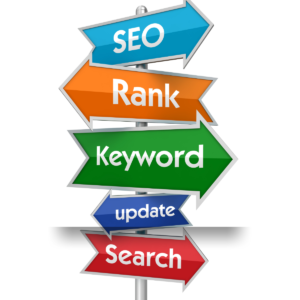
The Ultimate Solution for Busy Entrepreneurs

Struggling to manage your website while running your business? We've got you covered with a completely hands-off small business website for just $99 a month!
Ready to take the next step? Click here to schedule your 30-minute consultation and make your business life easier than ever.
Looking to establish an online presence for your small business? Look no further than Host SMB’s expertise in helping small businesses build their own website. In this article, we provide you with valuable insights and tips on how to create a professional and visually appealing website for your business. With our expert assistance, you can easily showcase your products or services, reach a wider audience, and boost your online credibility. Whether you’re a tech novice or have some web development experience, we’ve got you covered.
Understanding the Concept of a Business Website
In today’s digital age, having a business website is an essential component of any successful enterprise. It serves as your online storefront, providing a platform for potential customers to learn about your products or services, get in touch with you, and make purchases. Understanding the importance of a business website is crucial for staying relevant and competitive in today’s market.
The importance of a business website
A business website is like a virtual business card or shopfront that is accessible to anyone with an internet connection. It offers a professional online presence that can help establish credibility and build trust with potential customers. Without a website, you may be limiting your business’s reach, as many people turn to the internet to research products and services before making purchasing decisions.
Transform Your Business, Transform Your Life

Why Choose Host SMB Limited?
World-Class Design Meets Functionality
We don't just build websites; we create experiences. Our team of seasoned professionals designs custom, responsive websites optimized for both mobile and desktop. Your small business is unique; your website should be too. We have packages starting at $99 a month for all of your website needs taken care of.SEO Ready and Built for Growth
A beautiful website is just a start. We lay the foundation for your online success by implementing proven SEO strategies that make your site easily discoverable.A website also allows you to showcase your offerings in a visually appealing and organized manner. You have the freedom to highlight your unique selling propositions, share testimonials from satisfied customers, and provide detailed information about your products or services. This not only helps potential customers understand what you have to offer but also enables you to differentiate yourself from competitors.
How a website benefits your business
A well-designed business website can benefit your company in various ways. Firstly, it serves as a 24/7 marketing tool, allowing potential customers to access information about your business at any time. This means that even when you’re not available, your website can continue to generate leads and convert them into customers.
Additionally, a website provides a platform for customer engagement and interaction. Through features such as contact forms, live chat, and social media integration, you can easily connect with your audience, address their queries and concerns, and build relationships that can lead to increased customer loyalty and referrals.
Another significant benefit of having a website is that it can help improve your business’s visibility in search engine results. By implementing Search Engine Optimization (SEO) strategies, you can optimize your website’s content to rank higher in search engine rankings, making it more likely for potential customers to discover your business when they search for relevant keywords.
Key elements of a good business website
To create an effective business website, several key elements need to be considered. Clear and concise messaging is essential, as visitors should be able to understand what your business does and what sets you apart from competitors within seconds of landing on your website.
A visually appealing design that reflects your brand identity is also crucial. This includes incorporating your logo, using consistent color schemes and fonts, and ensuring that the overall layout is visually appealing and easy to navigate. A cluttered or confusing website can drive visitors away and harm your business’s credibility.
User experience (UX) is another critical element to consider. Your website should be easy to use and navigate, with clear menus, intuitive navigation, and a logical flow of information. Visitors should be able to find what they are looking for quickly and easily.
Furthermore, including compelling and high-quality visuals, such as product images and videos, can help capture visitors’ attention and create an emotional connection with your offerings. Finally, integrating features such as testimonials, customer reviews, and social proof can help build trust and credibility.
Planning Your Business Website
Before diving into the process of building your business website, it’s essential to plan and strategize to ensure that it aligns with your goals and meets the needs of your target audience.
Defining your website goals
Start by clearly defining the goals you want to achieve with your website. Are you primarily looking to generate leads, sell products directly, or simply provide information about your business? Having a clear understanding of your goals will help guide your decisions when it comes to choosing the right features and design elements for your website.
Identifying your target audience
Understanding your target audience is key to creating a website that resonates with them. Consider their demographic characteristics, interests, and preferences, and tailor your website content and design accordingly. This will ensure that your website effectively communicates your value proposition and attracts the right audience.
Planning your website content
Once you know your goals and target audience, it’s time to plan your website content. Determine what information is essential to include on your website and organize it in a logical and user-friendly manner. This can include sections such as an about page, product or service descriptions, FAQs, testimonials, and contact information.
Remember to keep your content concise, engaging, and easy to read. Using headings, bullet points, and visual elements can help break up the text and make it more scannable for visitors who are looking for specific information.
Sketching a rough website layout
Before diving into the website building process, it can be helpful to sketch a rough layout of your website. This will give you a visual representation of how different sections and pages will be organized and allow you to make any necessary adjustments before starting the design process. Consider the placement of menus, call-to-action buttons, and key information to ensure a seamless user experience.
Choosing a Website Builder
Now that you have a solid plan in place, it’s time to choose a website builder that aligns with your needs and technical expertise.
Understanding a website builder
A website builder is a tool that allows you to create and customize your website without the need for extensive coding or technical knowledge. It typically offers a drag-and-drop interface, pre-designed templates, and various features and plugins that you can easily integrate into your website.
The pros and cons of using a website builder
Using a website builder has its advantages and disadvantages. On the positive side, website builders are user-friendly, cost-effective, and allow for quick and easy website creation. They typically offer a wide range of templates, allowing you to choose a design that suits your brand.
However, website builders may have limitations in terms of customization options and flexibility. Some builders may not offer advanced functionality or integration options, making it challenging to implement certain features or scale your website in the future. It’s essential to consider your long-term goals and requirements before selecting a website builder.
Comparing popular website builders
There are several popular website builders available in the market, each with its own unique features and pricing plans. Some well-known options include Wix, WordPress, Squarespace, and Shopify. It’s recommended to explore the offerings and features of each builder and choose the one that best suits your needs, budget, and technical abilities.
Understanding Domain Names
A domain name is a unique web address that users can enter into their web browsers to access your website. It is an essential component of your online presence and plays a significant role in branding and credibility.
Defining a domain name
A domain name is the address that visitors will use to access your website, commonly in the format of “yourbusinessname.com.” It should ideally be short, memorable, and closely related to your business name or industry.
The importance of a good domain name
A good domain name is crucial for several reasons. Firstly, it helps establish your brand identity and makes it easier for potential customers to remember and find your website. It also contributes to your overall online credibility, as a professional and relevant domain name can instill trust in visitors.
Furthermore, a recognizable domain name can improve your search engine rankings, making it more likely for your website to appear in relevant search results. This can be achieved by incorporating relevant keywords into your domain name.
Steps to choosing and registering a domain name
When choosing a domain name, it’s essential to consider the following steps:
- Brainstorm relevant options: List down various domain name options that reflect your business and brand identity.
- Check availability: Use a domain registrar or hosting service to check the availability of your chosen domain names. If your preferred option is already taken, consider adding a location or industry-specific keyword to make it unique.
- Register your domain: Once you have selected an available domain name, register it with a reputable domain registrar. This typically involves providing your contact and payment information and paying a yearly fee.
Remember to choose a domain registrar that offers reliable customer support and ensures seamless domain management.
Website Design and Layout
The design and layout of your website play a crucial role in creating a positive user experience and conveying your brand image effectively.
Importance of website design
The design of your website is the first impression visitors get of your business. A well-designed website can captivate visitors, encourage them to explore further, and establish a sense of professionalism and credibility.
Consider your brand identity, target audience, and industry when designing your website. Use a consistent color scheme and fonts that align with your branding to create a cohesive and visually appealing experience.
Choosing a suitable website template
A website template is a predesigned layout that can be customized to fit your brand and content. When choosing a template, consider the specific requirements of your business, such as e-commerce functionality or portfolio showcasing.
Choose a template that allows flexibility in terms of design and customization options. Pay attention to the overall structure, navigation menus, and placement of key elements to ensure a user-friendly experience.
Customizing your website design
After selecting a template, you can customize its design to align with your branding and preferences. This includes adding your logo, updating colors and fonts, and incorporating high-quality visuals, such as images and videos.
It’s essential to strike a balance between aesthetics and functionality. Design elements should not overshadow the usefulness and ease of navigation of your website.
Understanding website layout
The layout of your website determines how information is presented and organized on different pages. A well-planned layout ensures that visitors can find what they are looking for quickly and easily.
Consider the logical flow of information and prioritize essential details. Use headings, subheadings, and bullet points to break up content and make it more scannable. Place important information, such as contact details or call-to-action buttons, at easily accessible locations.
Creating Content for Your Website
Compelling and engaging content is vital for attracting and retaining visitors on your website. It helps convey your brand message, educate potential customers, and increase conversions.
The importance of good content
High-quality content is the backbone of an effective website. It helps visitors understand your products or services, builds trust and credibility, and plays a significant role in search engine optimization.
Good content should be informative, engaging, and easy to read. It should address the needs and concerns of your target audience and communicate the unique value your business offers.
Writing effective web copy
When writing web copy, it’s crucial to keep your target audience in mind. Use clear and concise language, avoid jargon, and highlight the benefits of your products or services. Break up the text into short paragraphs and use headings and bullet points for easy reading.
Remember to incorporate relevant keywords into your content to improve search engine visibility. However, it’s important to avoid overusing keywords and prioritizing the readability and value of your content.
Including visuals in your content
Visual content, such as images, videos, and infographics, can significantly enhance the user experience and make your website more engaging. Images can effectively convey information, showcase products, and evoke emotions.
Ensure that any visuals you use are high-quality, relevant, and optimized for web viewing to avoid slow loading times. Alt text descriptions should also be included for accessibility and search engine optimization purposes.
Content management and updates
Creating a content management plan is essential for keeping your website fresh and relevant. Regularly update your content to reflect changes in your business or industry, add new products or services, and address frequently asked questions.
Additionally, consider incorporating a blog section where you can share valuable insights, industry trends, and relevant news. This can help establish your business as an authority and attract repeat visitors.
Website Optimization
Optimizing your website for search engines is crucial for driving organic traffic and increasing your online visibility.
Understanding SEO
Search Engine Optimization (SEO) refers to the practice of improving your website’s visibility in search engine results pages. It involves optimizing various elements of your website, such as content, keywords, and technical aspects, to rank higher in search engine rankings.
Keyword research for your website
Keyword research is the process of identifying the most relevant and valuable keywords for your website. These are the search terms that potential customers are likely to use when looking for products or services related to your business.
Use keyword research tools to identify keywords with high search volume and relatively low competition. Incorporate these keywords into your website’s content, headings, meta descriptions, and URLs to improve your organic rankings.
SEO techniques to optimize your website
There are several SEO techniques you can implement to optimize your website:
- Optimize meta tags and descriptions: Craft concise and keyword-rich meta tags and meta descriptions that accurately describe the content on each page.
- Improve website speed: Ensure that your website loads quickly, as slow loading times can negatively impact user experience and search engine rankings.
- Build high-quality backlinks: Seek opportunities to have reputable websites include links to your website. This can help boost your authority and credibility in the eyes of search engines.
- Use header tags and structured headings: Organize your content with proper heading tags (e.g., H1, H2, H3) to improve readability and help search engines understand the structure of your pages.
Monitoring website performance
Monitoring your website’s performance is crucial to identify areas for improvement and track the impact of your optimization efforts. Use web analytics tools, such as Google Analytics, to gather data on website traffic, user behavior, and conversion rates.
Analyze this data to identify trends, uncover issues, and make data-driven decisions to optimize your website further. Regularly review and update your SEO strategies to stay ahead of changes in search engine algorithms and ensure continued visibility.
Website Security
Ensuring the security of your website is essential for protecting sensitive data and maintaining your users’ trust.
The importance of website security
Website security is crucial to safeguard your business’s reputation and protect your customers’ information. A security breach can lead to data theft, financial loss, and damage to your brand’s credibility.
Investing in robust security measures demonstrates your commitment to protecting your customers and can help build trust, encouraging them to engage with your website and make transactions.
Threats to website security
There are various threats that can compromise the security of your website, including:
- Malware and viruses: These can infect your website and compromise its functionality and security.
- Brute-force attacks: Hackers attempt to gain access to your website by trying multiple username and password combinations.
- SQL injections: Malicious code is injected into your website’s database, allowing unauthorized access to sensitive information.
- Cross-site scripting (XSS): Attackers inject malicious scripts into web pages viewed by users, potentially stealing their data or spreading malware.
Steps to secure your website
To enhance the security of your website, consider implementing the following measures:
- Regular software updates: Keep your website’s software, plugins, and themes up to date to ensure you have the latest security patches.
- Strong user authentication: Implement strong password policies, enable two-factor authentication, and limit login attempts to mitigate the risk of unauthorized access.
- Secure web hosting: Choose a reputable web hosting provider that prioritizes website security and offers features such as SSL certificates and regular backups.
- Firewalls and security plugins: Implement web application firewalls and security plugins to monitor and block potential threats.
- Regular backups: Regularly backup your website’s data to ensure you can recover from any security breaches or data loss.
By taking these security measures, you can minimize the risk of cyberattacks and protect your website and users’ sensitive information.
Website Maintenance
Regular website maintenance is essential for ensuring that your website remains up-to-date, functional, and aligned with your business goals.
Importance of regular website maintenance
Just like any physical asset, websites require regular maintenance to maintain their performance, security, and user experience. Regular maintenance allows you to catch and resolve any issues before they impact your business or visitors negatively.
Additionally, website maintenance helps you keep your content fresh and up to date. Outdated information can erode trust and credibility, potentially turning away potential customers.
Common website maintenance tasks
Some common website maintenance tasks include:
- Regular content updates: Ensure that your website’s content is accurate, relevant, and up to date. Update product information, images, and blog posts as necessary.
- Bug fixes and software updates: Research and apply patches and updates to your website’s software, plugins, and themes to improve performance and security.
- Broken link management: Regularly check for broken links within your website and fix or redirect them as needed to provide a seamless user experience.
- Performance monitoring: Monitor your website’s loading speed and performance regularly. Optimize images, compress files, and implement caching to improve overall website speed.
Scheduling regular website checks
To maintain your website effectively, it’s essential to establish a regular maintenance schedule. This can be daily, weekly, monthly, or as needed, depending on the size and complexity of your website and business requirements.
Set reminders or use website maintenance plugins or services to automate routine maintenance tasks and receive alerts about any issues that require attention.
Using analytics for maintenance decisions
Analytics tools, such as Google Analytics, can provide valuable insights into visitor behavior, conversion rates, and overall website performance. Regularly analyze these data to identify opportunities for improvement and make informed maintenance decisions.
For example, if certain pages have consistently high bounce rates, it may indicate that the content or user experience needs improvement. On the other hand, if certain pages consistently drive high conversion rates, it may be worth investing more resources in those areas.
By using analytics, you can gather actionable data and continuously optimize your website to better serve your audience and achieve your business goals.
Building a Mobile-Responsive Website
In an increasingly mobile-centered world, having a mobile-responsive website is no longer a luxury but a necessity.
Understanding mobile-responsiveness
A responsive website is one that adapts and displays properly on various devices, including smartphones, tablets, and desktop computers. It ensures that your website’s layout, content, and functionality remain intact regardless of the device being used.
The importance of a mobile-responsive website
With the increasing use of smartphones and tablets, more and more users access websites from mobile devices. If your website is not mobile-responsive, it will appear distorted or difficult to navigate on smaller screens, leading to a negative user experience and potential loss of customers.
A mobile-responsive website allows your content to be easily read, images to be viewed, and forms to be completed on any screen size. It ensures that users can access your website seamlessly regardless of the device they are using, increasing the likelihood of engagement, conversion, and customer satisfaction.
Steps to create a mobile-responsive website
Creating a mobile-responsive website involves the following steps:
- Choose a responsive design template: When selecting a website builder or template, ensure that it offers responsive design options. These templates are designed to adjust and optimize the layout and content of your website automatically based on the user’s device.
- Test and optimize for different devices: After building your website, thoroughly test its functionality, layout, and navigation on various devices and screen sizes. Use responsive design testing tools to identify any issues and make the necessary adjustments.
- Optimize images and media: Large image files can slow down your website’s loading time, especially on mobile devices. Compress and optimize images to ensure fast loading speeds without compromising quality.
- Prioritize content and user experience: Mobile users typically have limited attention spans and are more likely to browse quickly. Ensure that your content is concise, organized, and scannable. Use mobile-friendly features such as collapsible menus and touch-friendly buttons to enhance the user experience.
By following these steps and prioritizing mobile responsiveness, you can create a seamless and user-friendly experience for visitors, regardless of the device they use to access your website.
In conclusion, building a business website is a crucial step in establishing your online presence, attracting customers, and growing your business. By understanding the importance of a business website, planning effectively, choosing the right website builder, optimizing your content and design, and ensuring security and maintenance, you can create a powerful online platform that drives growth and success.
Unlock the Future of Easy Business Management

Are you overwhelmed by website management tasks? Say no more. Experience the luxury of a hands-off small business website for just $99 a month!
Why wait? Click here to book your 30-minute consultation and simplify your business operations like never before.


